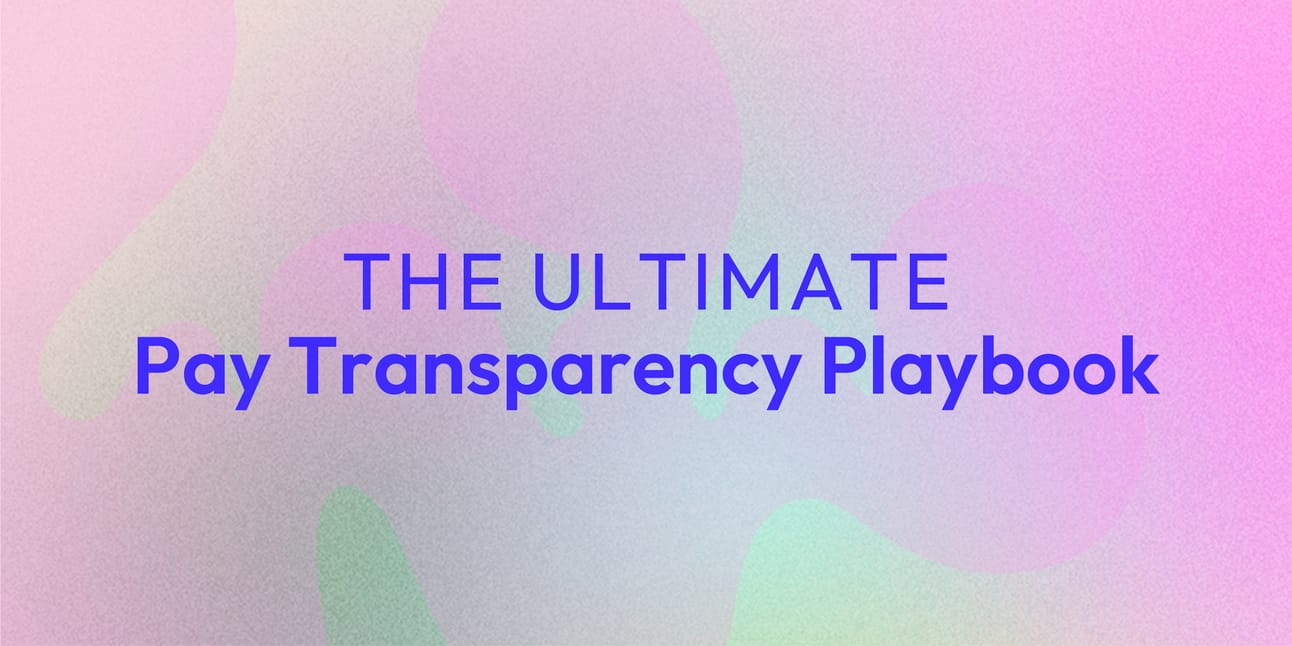Presented by
Friends,
It’s officially winter here, and we’re descending into the depths of it. I’m writing this with what is quickly becoming my most frequent work from home outfit:
Ugg boots
Track pants (aka sweatpants)
Jumper (aka sweatshirt)
Dressing like the Australian eskimo each day is making me reminisce about how we tend to lose fashion when we are predominantly working from home.
Changing topic — do you remember 6 months ago I wrote a post about ‘How to Become a HR consultant’?
It documented my first year as a solopreneur and how it netted me more in income than I ever earned in-house.
Since posting, it’s been read 5,000+ times (and counting), and I’ve personally had dozens of responses from long-time, new and those who are solopreneur-curious, sharing gratitude for the transparency and asking questions to help them along their own journey.
In the time since, I’ve thought frequently about a spin off publication that deep dives into all the things I do and have done to run a successful 6-figure business.
But I want to hear from you.
If I do it, I’d want to commit serious energy to ensuring I frequently share detailed and valuable insights for others to tread that same path to success.
For it to be sustainable I’d likely need to consider a nominal subscription price.
I'd love to hear from you; would you subscribe to a newsletter focused on how to become a HR consultant?
Would you subscribe to a newsletter focused on how to become a HR consultant?
In other news, I’m now deeply caught up in MobLand (thanks to a friend for the rec). Who doesn’t love a British gangster story? This gives it in spades. If you liked The Gentlemen (movie and series) then you can expect a similar level of gangland driven narrative. I also finally got around to consuming True Blood season four (I always love the mix of the superstition and reality) — worth a watch if you’re into crime shows with a sprinkling of paranormal activity.
Otherwise, I’ve planned a trip to Europe for five weeks in October. And by planned I mean booked the flights and nothing in between. We’re hitting up Portugal, Spain and Italy, so if you’ve got recommendations, send them through!
For now, enjoy the next in a series of write ups—this one on pay-for-performance.
Matt
Pay transparency isn’t a future problem — it’s already here. And as the Head of People, you’re expected to have all the answers. But most don’t. You’re not alone if you’re:
Feeling underprepared
Unsure where to start
Worried you’ll say the wrong thing
The Ultimate Pay Transparency Playbook is your go-to guide. It helps you:
Understand what transparency really means
Define the right approach for your org
Equip your leaders with language and tools
Lead with clarity. Avoid the chaos. Get the playbook.
Interested in sponsoring these emails? See our partnership options here.
Know a Head of People handling startup compensation 🙋 why not forward this to them for some instant karma?
Did someone forward this to you? Subscribe here and save them the click next time!

What is Pay-for-Performance?
When scaling a startup, rewarding high performers seems like common sense. But, implementing a 'pay-for-performance' model is more complex than it appears. This article dives into the realities of performance-linked pay, highlighting the potential risks, missteps, and crucial considerations for ensuring it drives success, not resentment.
When you’re scaling a startup, rewarding high performers seems like common sense — especially when you’re racing toward outcomes, budgets are tight, and your Founder wants to funnel limited resources to the highest impact contributors.
On paper, pay-for-performance sounds like a smart, merit-based way to do that. But it’s not that simple — and in early-stage and scaling startups, pay-for-performance often fails to deliver on its promise — with misunderstood performance criteria, immature feedback systems, and fuzzy goalposts quickly turning a good intention into a culture killer.
If you’re a Head of People weighing up a performance-linked pay model, this is your nonsense-free guide on what to consider before implementing.
What are the risks of pay-for-performance done badly?
No doubt all of us can reflect on pay-for-performance programs that missed the mark, and it’s important that we do, because getting performance-based pay wrong, can often result in harrowing outcomes for your business, that actually worsen or cause more issues than they seek to solve.
Let’s talk about the side effects of poorly designed systems:
Prioritise individual wins over team outcomes — brilliant jerks who can bring down the benchmark but look great amongst it.
Encourage knowledge hoarding (“my bonus depends on it”) — gatekeeping information that slows the company, but shows up as “being indispensable”
Cement bias when decisions rely on gut feel over structured evidence – managers issuing captains picks despite not being close to how the work was performed or who was involved in it.
These are the real risks of designing pay-for-performance models recklessly. So let’s look at where to start before even beginning to tie pay to outcomes.
Is pay the right lever for driving performance in startups?
The second consideration to make before implementing pay-for-performance is — even if you know what performance looks like — is it the right motivator for your company?
Financial incentives aren’t magic.
Research going back decades shows that for most knowledge work, intrinsic motivation — purpose, autonomy, mastery — outweighs extrinsic rewards.
If your team doesn’t know what success looks like, doesn’t get feedback, or doesn’t believe in the mission, pay-for-performance is unlikely to save you.
In fact, done carelessly, pay-for-performance can backfire — diminishing trust, creating internal competition, and reducing collaboration to a transaction.
Sometimes, the real lever isn’t pay. It’s clarity. Or coaching. Or better prioritisation.
What does “performance” actually mean in a startup context?
In theory, performance should be a mix of behaviours, outcomes, and impact. In practice? It often gets confused with hustle, likeability, or who talks the most in stand-up.
Startups move fast, and roles can often evolve on a quarterly basis, which can make it hard to even put a finger on what performance looks like.
Someone crushing it today might be in a totally different role in six months, or the goals we have now might not be where we need to focus as an organisation.
This brings us to the first question you need to answer before implementing a pay-for-performance model: what does performance look like at your company?
Outputs, outcomes, effort, alignment to values — we need to be clear on the things we want to see more of, to avoid adopting practices that potentially work at odds with them.
It’s critical we find a shared definition of performance across the organisation.
Here’s some diagnostic questions you can use to establish what performance means first:
Can we describe high performance without naming names?
Do managers agree on what “great” looks like across teams?
Can we separate actual impact from visibility?
Can we agree what performance looks like at an individual level, or only at team or company levels?
Each of these questions will help us understand the shape and nature of what pay-for-performance may look like.
The bottom line here is that you shouldn’t progress into pay-for-performance practices if you can’t effectively define how performance shows up in your organisation.
If you’ve made it this far, and your company can both clearly articulate performance AND believes it’s the right fit for your org — great — let’s explore some pay-for-performance practices.
Four pay-for-performance models to consider
Pay-for-performance isn’t just about bonuses. At its core, it’s about the deliberate exchange of value for outcome.
That value might show up in base salary increases, lump-sum bonuses, equity grants, or profit-sharing.
But the how matters just as much as the what. Here are four common models to consider — and the benefits and tradeoffs that come with each:
Model 1: Salary increases tied to performance reviews
The default model in many orgs. Employees receive differentiated base salary increases based on their performance ratings during the annual review process.
✔️ Benefits:
Creates a clear, linear link between performance and reward
Easy for managers to understand and explain
⚠️ Drawbacks:
Risks entrenching pay gaps over time (especially if ratings are biased)
Comp growth of high performers can outpace internal equity checks
You can’t take it away if performance drops
Model 2: Bonuses for high performers
Instead of adjusting base salary, top performers receive lump-sum cash bonuses as a one-off reward.
✔️ Benefits:
Maintains base salary pay equity structures where two people do the same role but deliver different performances
Avoids long-term salary inflation from one-off performance peaks
⚠️ Drawbacks:
Can feel transactional if not tied to meaningful feedback
Lacks compounding benefit, so may feel less impactful over time
Model 3: Hire for performance, then pay everyone well
This approach assumes everyone is a high performer — so you pay above market from the outset (e.g. instead of 50th percentile, you pay 62.5th or 75th). You shift the performance pressure from reactive, to proactive.
✔️ Benefits:
Increases talent density across the company
everyone is held to a high standard
⚠️ Drawbacks:
Can be expensive, and hard to sustain if revenue doesn’t keep pace
Requires a robust hiring and onboarding process to avoid false positives
Requires clarity on what happens when performance drops
Model 4: Profit or revenue sharing
Instead of rewarding individual performance, this model links pay to company-level outcomes like profit, ARR, or milestone achievements.
✔️ Benefits:
Reinforces shared ownership and collective accountability
Useful when performance is hard to break down beyond the company level
⚠️ Drawbacks:
Can dilute motivation for high performers if rewards feel evenly spread
Needs a fair and transparent method of distribution (by level? by % of salary?)
Risk of “passengers” benefiting from others’ hard work
What does good communication around performance-based pay look like?
Even the sharpest comp models collapse if managers can’t explain them, so don’t just build these practices and expect them to work.
Many companies get so good at streamlining the process, they forget about the humans in the loop. Unless that person understands exactly what behaviours or outcomes earned them the reward, the impact is lost — and so is the opportunity to reinforce it.
To do this, you need:
A clear, documented compensation philosophy (ideally public)
Talking points and tools for managers to explain how pay decisions are made
Clarity on what is performance-linked and what isn’t (e.g. market adjustments ≠ merit)
Most importantly, don’t hide behind opaque maths. People will fill in the gaps — and they usually assume the worst.
Even the best pay systems fall flat if managers can’t explain them — or if employees don’t trust them — so focus on ensuring your pay-for-performance, like all pay practices, are both clear and consistent.
The takeaway
Pay-for-performance can be a powerful tool — but only when performance is clearly defined, fairly measured, and communicated with care.
In startups, simplicity beats sophistication. A lightweight, transparent model that aligns with your stage and values will always outperform a complex system that no one understands.
That’s all for this week.
Sure, this is technically the end of the newsletter, but we don’t have to end here! I’d love this to be a two-way chat, so let me know what you found helpful, any successes you’re seeing, or any questions you have for me.
Sharing is caring. If you are enjoying our newsletter, others might too — forward this on to them and get their endless appreciation.



